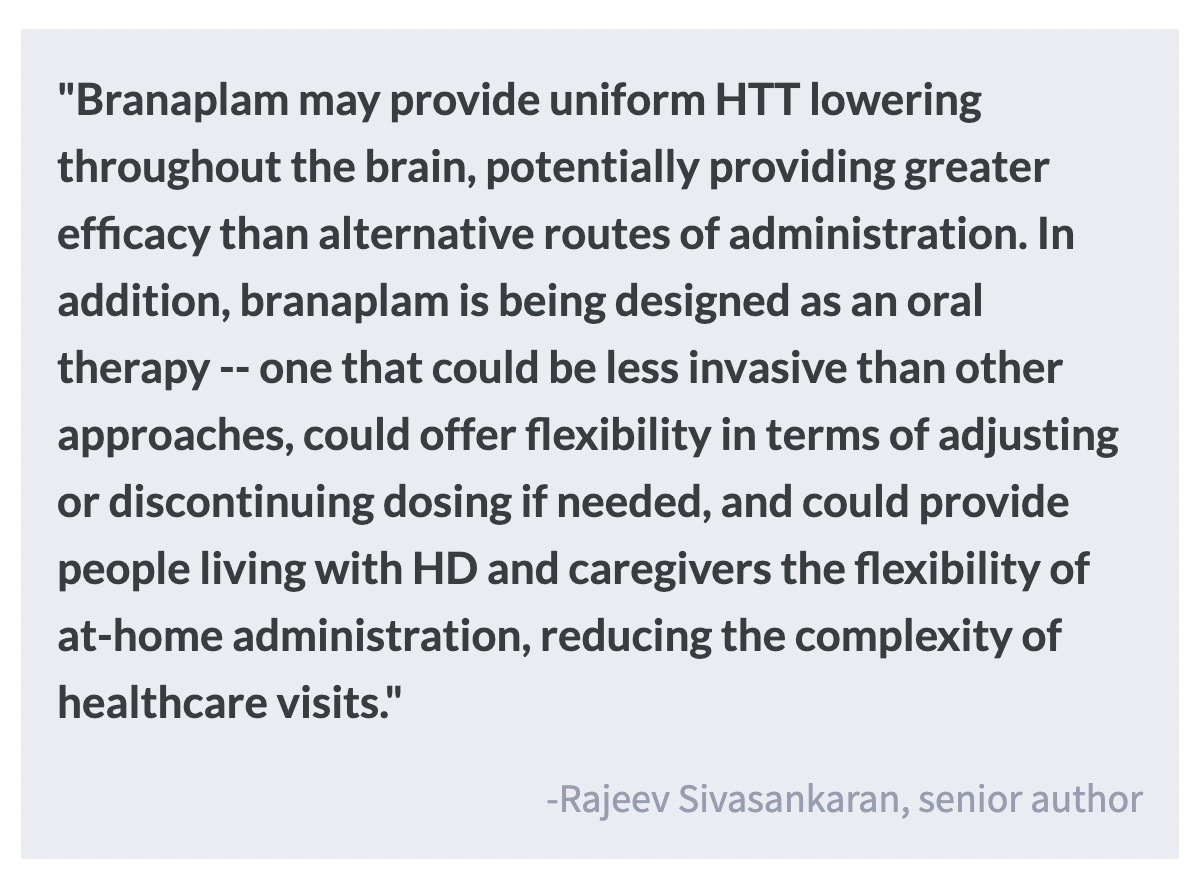A New Treatment for Huntington’s Disease
Post by Leanna Kalinowski
The takeaway
Scientists have uncovered a potential new treatment for Huntington’s disease that lowers the abnormal huntingtin protein levels caused by a mutation in the huntingtin gene.
What's the science?
Gene expression, the conversion of DNA into protein, is a fundamental biological process. It consists of two major steps: transcription, where the instructions that make up DNA are copied and rewired into messenger RNA (mRNA), and translation, where this mRNA is converted into proteins that the body can then use for several different functions. Genetic mutations that lead to abnormal protein levels following translation are responsible for a myriad of disorders, including certain cancers and Huntington’s disease.
Huntington’s disease (HD) is a neurodegenerative disorder with motor, cognitive, and psychiatric symptoms that are caused by a mutation in the huntingtin gene (HTT). This mutation involves a series of three DNA building blocks - cytosine, adenine, and guanine - that typically appear multiple times in a row in a genetic sequence. HTT genes without the mutation repeat this series between 10 and 35 times, while HTT genes with the mutation repeat it up to 120 times. This mutation is then transcribed into abnormal HTT mRNA, which then leads to the translation of an abnormally long HTT protein. Accumulation of this protein in the brain causes brain cells to progressively break down as people with HD get older, and there is currently no cure for this disease. This week in Nature Communications, Keller and colleagues examined whether branaplam, an experimental drug, could alter the HTT gene mutation and slow the progression of HD.
How did they do it?
First, the researchers examined the impact of branaplam on gene expression by exposing brain cells to the drug in vitro (i.e., in a petri dish). After 24 hours, they then used RNA sequencing to measure mRNA expression levels of all genes in the cells, including the HTT gene.
Next, they examined the impact of branaplam on HTT mRNA, HTT protein, and HD motor symptoms in mice that were genetically modified to have HD-like symptoms. The first set of HD mice received branaplam every other day for six days, after which HTT mRNA levels were measured. The second set of HD mice received thrice-weekly doses of branaplam for either one or three weeks, after which HTT protein levels were measured. The final set of HD mice was treated intermittently with branaplam for three months, after which they underwent a motor coordination test.
Finally, they examined the impact of branaplam administration on HTT mRNA in humans by assessing infants enrolled in a separate study on branaplam. These patients received weekly doses of the drug for multiple weeks, after which their blood was drawn and tested for HTT mRNA levels.
What did they find?
First, the authors found that branaplam reduces HTT mRNA levels by impacting RNA splicing, which is a process that naturally happens between transcription and translation. Typically, this process involves the removal of RNA sequences called introns, which leaves behind RNA sequences that are called exons. When branaplam is administered to brain cells, it introduces a new “pseudoexon” into the HTT RNA sequence, which ultimately lowers HTT protein levels following translation. Next, they found that administering branaplam to a mouse model of HD leads to a similar genetic effect, where a pseudoexon is once again introduced to the HTT mRNA transcript and reduces HTT protein levels. These genetic changes also led to decreased motor impairments in HD mice compared to those that did not receive the drug. Finally, they observed a similar effect on HTT mRNA in infants that received the drug.
What's the impact?
Taken together, these results suggest a promising role for branaplam in reducing HTT protein levels by introducing a pseudoexon to its mRNA sequence. This drug not only reduces levels of the protein responsible for the neurodegeneration of brain cells in HD, but also improves motor impairments in a mouse model of HD. Future studies should assess the effectiveness of branaplam in treating symptoms and preventing further neurodegeneration in humans with HD.


